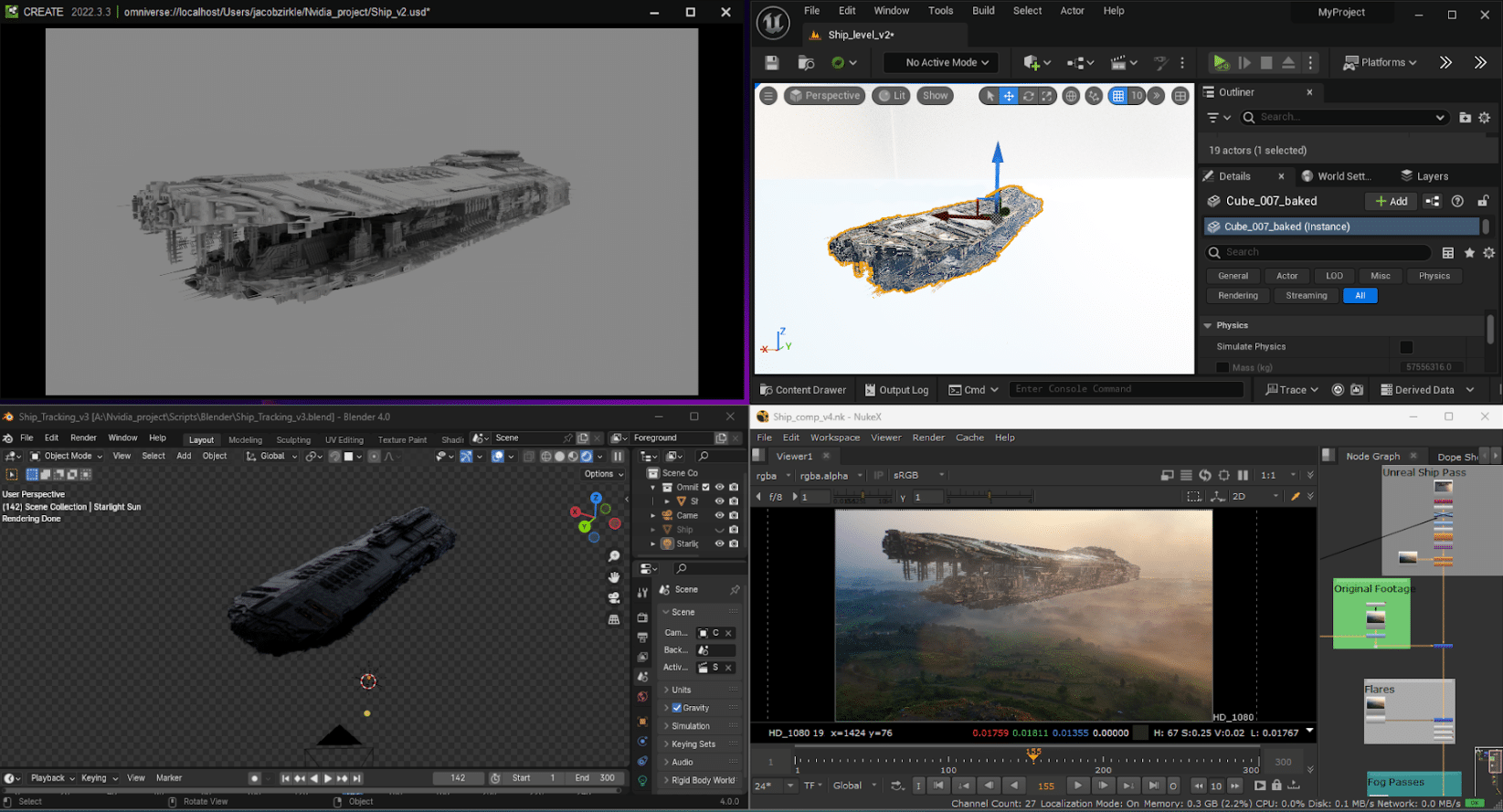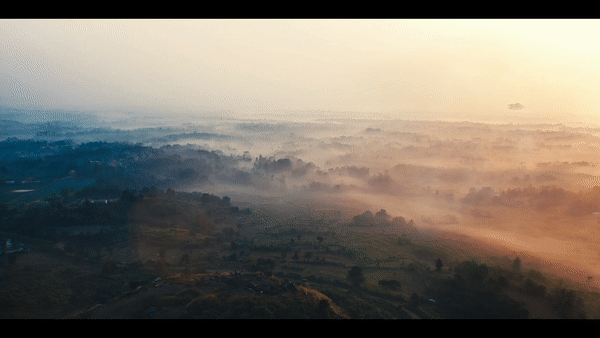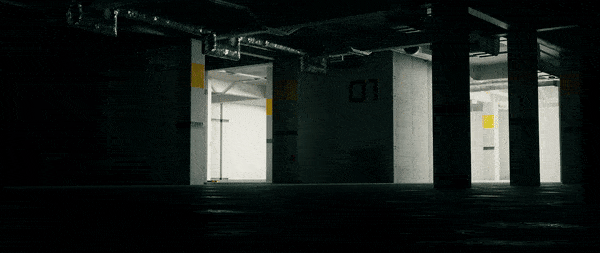
[ad_1]
Editor’s be aware: This submit is a part of Into the Omniverse, a collection centered on how artists, builders and enterprises can rework their workflows utilizing the newest advances in OpenUSD and NVIDIA Omniverse.
3D designers and creators are embracing Common Scene Description, aka OpenUSD, to rework their workflows.
Artistic software program firm Foundry’s newest launch of Nuke, a robust compositing instrument for visible results (VFX), is bringing elevated assist for OpenUSD, a framework that gives a unified and extensible ecosystem for describing, composing, simulating and collaborating inside 3D worlds.
With superior compositing and improved interoperability capabilities, artists are showcasing the immense potential of Nuke and OpenUSD for visible storytelling.
Bringing 3D Visions to Life With Nuke and OpenUSD
YouTuber Jacob Zirkle is one such 3D artist.
Impressed by his tenth watch by way of the Star Wars movies, Zirkle wished to create a sci-fi ship of his personal. He first mixed laptop graphics parts in Blender and Unreal Engine earlier than utilizing USD to carry the scene into Nuke for compositing.

OpenUSD was the glue that held his workflow collectively.
“Normally, I’ve to cope with a number of, various file varieties in my VFX pipeline, and as quickly as one thing will get up to date, it may be an actual ache to use the change throughout the board,” Zirkle stated. “However as a result of I used to be utilizing the identical OpenUSD file for all of my applications, I might save the file as soon as, and modifications get robotically propagated by way of the pipeline — saving me a ton of time.”

Edward McEvenue, an affiliate artistic director at NVIDIA, is utilizing OpenUSD and Nuke to create his brief movie with the working title: “Dare to Dream.”
By way of the challenge, McEvenue hopes to visualise elements of automated manufacturing. He makes use of Autodesk 3ds Max and SideFX Houdini for 3D scene creation, Chaos V-Ray for rendering arbitrary output variables and prolonged dynamic vary sequences, and Nuke for compositing parts for ultimate renders.

OpenUSD helps streamline knowledge switch between functions, dashing the iteration course of. “Nuke’s USD capabilities enable me to seamlessly transition 3D belongings between digital content-creation apps, offering a robust instrument for attaining superior compositing methods,” he stated.
Different NVIDIA creatives have built-in OpenUSD and Nuke into their 3D workflows. A crew of 10 artists developed a absolutely OpenUSD-based pipeline and customized tooling on NVIDIA Omniverse — a improvement platform for constructing OpenUSD-based instruments and functions — to carry to life the “Da Vinci Workshop,” a challenge to encourage better OpenUSD use amongst pipeline builders.
The artists additionally used Adobe Substance Painter, Autodesk 3ds Max, Autodesk Maya, DaVinci Resolve, SideFX Houdini, Pixelogic Zbrush and Omniverse USD Composer. OpenUSD served because the spine of the crew’s inner pipeline, providing the flexibleness wanted to collaborate throughout functions with ease.
https://www.youtube.com/watch?v=1PkLdVwOQ1M
The “Da Vinci Workshop” OpenUSD dataset is now obtainable on the Omniverse launcher — free for builders and artists.
Foundry Nuke representatives, Omniverse group members and the NVIDIA artistic crew lately joined a livestream to debate their 3D workflows and the impression of OpenUSD. Study extra by watching the replay:
Powering Digital Workflows With OpenUSD
The 15.0 and 14.1 updates to Nuke carry important workflow enhancements to these working with OpenUSD.
The up to date GeoMerge node now affords 4 new modes: Merge Layers, Duplicate Prims, Flatten Layers and Flatten to Single Layer. These give customers better management over geometry and OpenUSD layers, permitting for fast merging of complicated buildings, the duplication of workflows and more practical layer administration.
The OpenUSD-based 3D system launched in Nuke 14.0 permits customers to deal with giant, intricate scenes with better ease. And the brand new Scene Graph Popup characteristic in Nuke 15.0 permits customers to simply filter by way of 3D scene knowledge, decreasing time and power wanted to spend trying to find particular belongings.
As well as, the principle 3D scene graph now features a search and filter characteristic, simplifying workspace navigation.
Foundry can also be embracing OpenUSD throughout its different merchandise, together with the newest updates to Katana 7.0, which enhance pipeline effectivity by integrating USD-native workflows already aligned with Nuke’s 3D system structure.
Get Plugged In to the World of OpenUSD
NVIDIA and Foundry are each members of the Alliance for OpenUSD (AOUSD), a corporation devoted to an open-source future utilizing the highly effective framework. To study extra, discover the AOUSD discussion board and take a look at these sources on OpenUSD.
Share your Nuke and Omniverse work as a part of the newest group #WinterArtChallenge. Use the hashtag for an opportunity to be featured on the @NVIDIAStudio and @NVIDIAOmniverse social channels.
Winter has returned and so has our #WinterArtChallenge! ❄️🎿⛄
Share your winter-themed artwork (like this unimaginable one created on an RTX GPU by @rafianimates) utilizing the hashtag for an opportunity to be featured on our social channels! 🙌
We will not wait to see what you create! ⛷️ pic.twitter.com/Ml4cUAUgW3
— NVIDIA Studio (@NVIDIAStudio) December 4, 2023
Get began with NVIDIA Omniverse by downloading the usual license free, entry OpenUSD sources, and learn the way Omniverse Enterprise can join your crew. Keep updated on Instagram, Medium and Twitter. For extra, be a part of the Omniverse group on the boards, Discord server, Twitch and YouTube channels.
[ad_2]